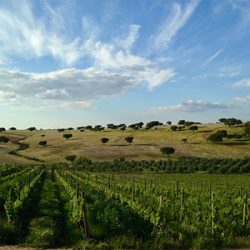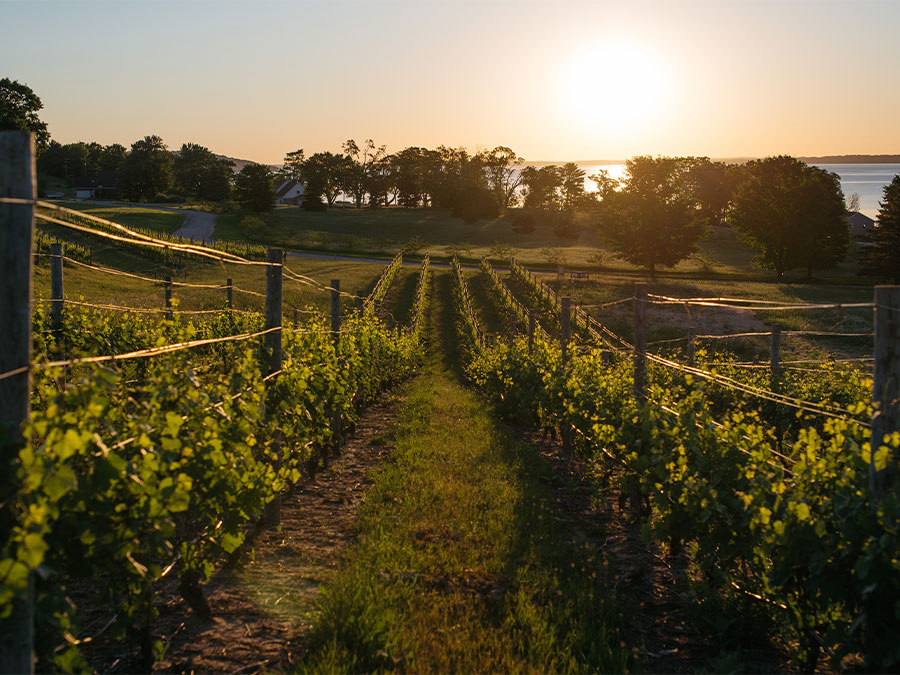

This summer, we had the opportunity to taste more than a hundred wines from the state of Michigan, most of them from the Lower Peninsula’s northwestern rim, the Leelanau and Old Mission peninsulas. We’d received submissions from Michigan wineries before, but never as many at one go, resulting in a comprehensive snapshot. As its vinifera-winegrowing heritage enters its second generation, we found a region making impressive strides in quality, worldliness, and energy, a provincial locus with global aspirations, freshly interpreting the wine world’s latest innovations and trends, much like what we’re seeing in Vermont, New York, New Jersey, Maryland, Virginia, Texas and Arizona.
Michigan has been home to viticulture for more than a century, and grapes seem naturally inclined to thrive there: a waterway called the River Raisin (La Rivière aux Raisins) in the southeastern corner of the state earned its name for the thickets of wild grapevines that once lined its banks. For decades, the state has been a concord and niagara supplier for Welch’s, the country’s best-known producer of grape juice.
Today, vinifera plantings are found mostly in the sandy, free-draining, young glacial soils of the Leelanau and Old Mission Peninsulas, where Lake Michigan mitigates winter temperatures and cools the region in summer. Leelanau is surrounded by the lake’s northern lake and buffeted by the lake’s turbulent climatic effects, whether squalls or winds or blinding lake-effect blizzards in winter. The Old Mission Peninsula lies east of Leelanau, slightly more protected, jutting like a slender tentacle into the calmer waters of the Grand Traverse Bay.
The area has long been a fruit belt, home to cherries, apples, grapes and blueberries. At nearly 45 degrees north latitude, well north of the Finger Lakes and Canada’s Niagara Escarpment, it is one of the most northerly locales for grapes east of the Rockies, with late budbreak, and harvests that last into November.
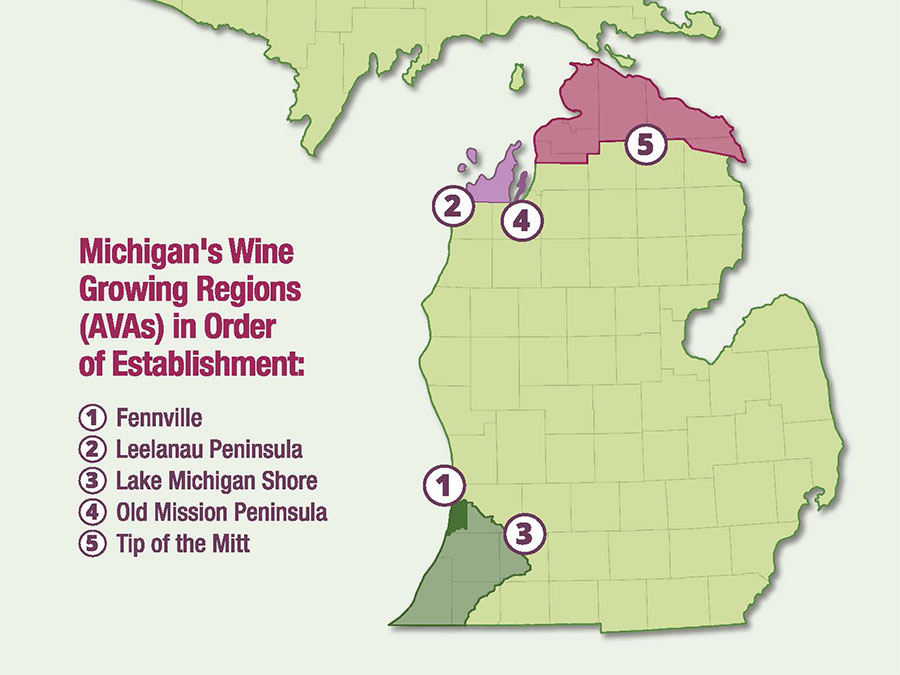

It hasn’t always been an accommodating environment for vinifera vines, yet Ed O’Keefe of Chateau Grand Traverse, and Larry Mawby, a sparkling wine producer, took on the challenge in the seventies. O’Keefe brought in consultants like André Tchelistcheff, and Helmut Becker from Geisenheim, eventually hiring a string of German winemakers for Grand Traverse, which remains one of the largest wineries in the region. They planted winter-hardy varieties with an eye toward Alsace and Germany; just as in the Finger Lakes, their efforts were met with skepticism. “We managed to piss off all the hybrid growers,” says Sean O’Keefe, Ed’s son and a second-generation winemaker. “But Dr. Frank and Hermann Wiemer were adamant that this was the way to go. Really, if you can plant vinifera, why would you do otherwise?”
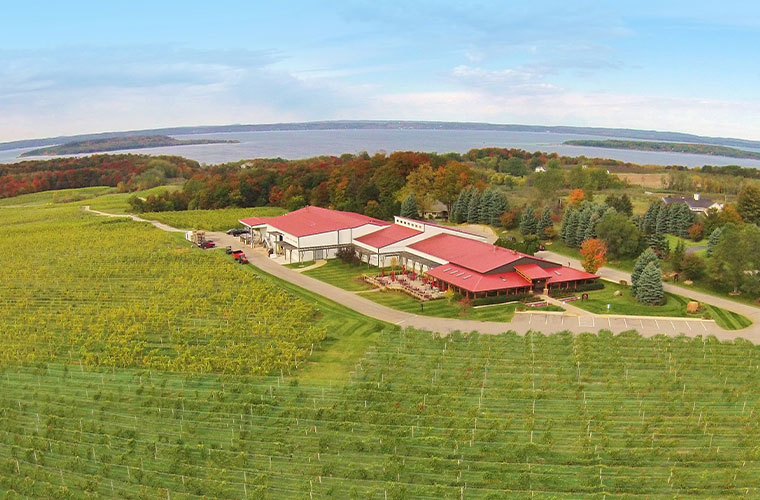

Sean went on to attend Geisenheim University himself, a place he refers to as the “Hogwarts of Riesling,” and befriended the future principals of several prestigious German wineries, including Nik Weis of St. Urbans-Hof, Christoph Friedrich, eventually the cellarmaster at Weingut Diel, and Christian Witte, who just left as Director of Schloss Johannisberg—“all of us,” he laughs, “telling the teachers how wrong they were.” He did stages in the Mosel, the Rheingau, and the Pfalz, before returning to his family’s winery, only to depart in 2015, when family members resisted his desire for innovation.
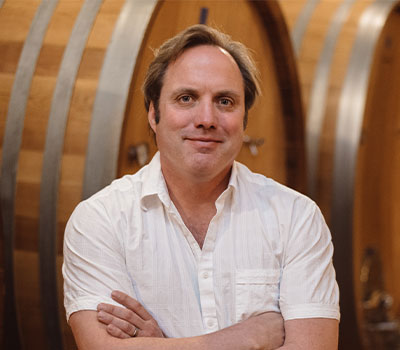

“We managed to piss off all the hybrid growers. Really, if you can plant vinifera, why would you do otherwise?” —Sean O’Keefe
Marty Lagina, a Michigan native and serial entrepreneur, did not. He founded Mari Vineyard in 2006, and by 2015 it had grown to seven vineyards and 24 grape varieties, including an unusual planting on the property owing to Lagina’s dogged interest in Italian reds. These six acres of red varieties are protected in the fall months by a hoop house of a type they call “nella serra,” which retains heat for slow-ripening varieties in the latter stages of fruit maturity.
It leaves O’Keefe with just the sort of playground he wanted, leaning into Lagina’s Italian plantings with serendipitous blends. He experiments with coferments, pét-nats and skin contact, zooming Lagina’s Italian lens in on places like Friuli and the Adriatic Coast. He’s especially keen on exploring extended lees aging, which he says helps to polish his whites, particularly the rieslings, many of which carry a pithy phenolic signature that conveys a pleasing rusticity.
Others, like Bryan Ulrich of Left Foot Charley, Thomas Houseman of Two Lads Winery, and Robert Brengman of Brengman Brothers, are converting most of their viticulture to organics and their winemaking to spontaneous fermentations, which is changing the complexion of their wines, and the region’s at large.
Below is a sampling of some of the discoveries we’ve made in our tastings.
91 | Mari
2016 Old Mission Peninsula Ultima Thule Red blend $80
This ambitious blend of nebbiolo, schioppettino, cabernet sauvignon, petit verdot and merlot is quiet, sturdy, and vinous, with faint scents of plum, dried cherry, smoke and a hint of creosote. The crunchy greenness of the nebbiolo organizes the red plum and pomegranate fruit, while its firm tannins beg for food. Fascinating and cellarable. (132 cases)
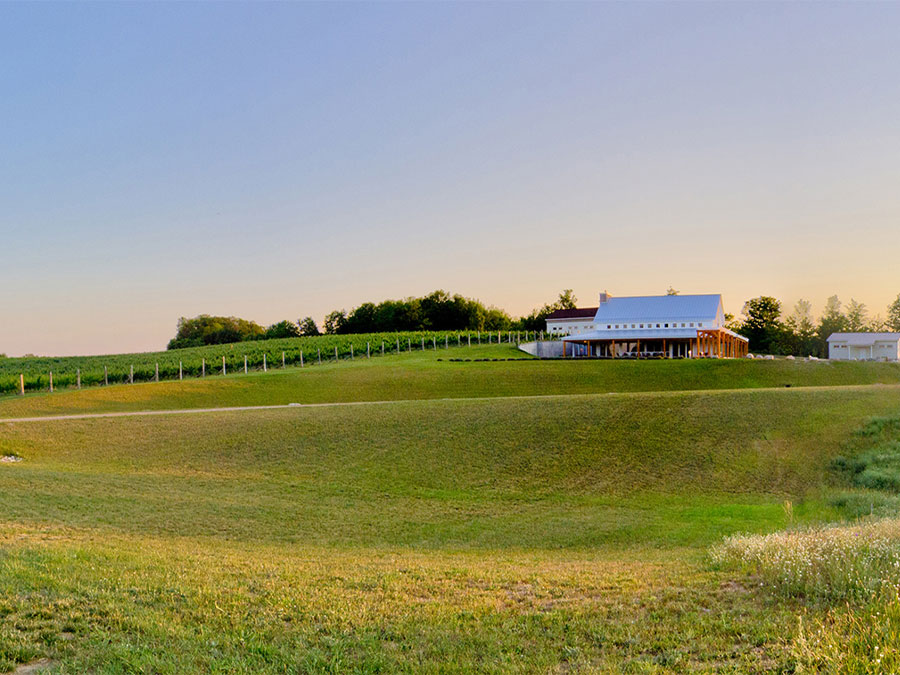

90 | Brengman Brothers
2020 Leelanau Peninsula Cabernet Franc $60
Classic in an herbaceous mode, this leads with scents of lilac and thyme, overlying concentrated red fruits. It’s firm and velvety in texture, maintaining an herbal weave of eucalyptus and blackberry. Dry and spicy, for lamb.
90 | Brengman Brothers
2021 Leelanau Peninsula Kabinett Crain Hill Vineyard Riesling $25
This wine has a demonstrable perfume of smoke, peppercorn and onion chiffonade. It also has a pithy phenolic grip, grainy and firm, with a modest sweetness and lively acids. (200 cases)
90 | Mari
2020 Old Mission Peninsula Bestiary Ramato Bella Vista Vineyard Pinot Grigio $32
This mostly–skin contact pinot grigio is blended with fractions of malvasia, sauvignon blanc and friulano. The amber and lees combination is almost Sherry-like, with a caramelized-orange scent and burnt-orange-peel flavors, nutty and savory, with the tannic grip for scallops sautéed in brown butter. (305 cases)
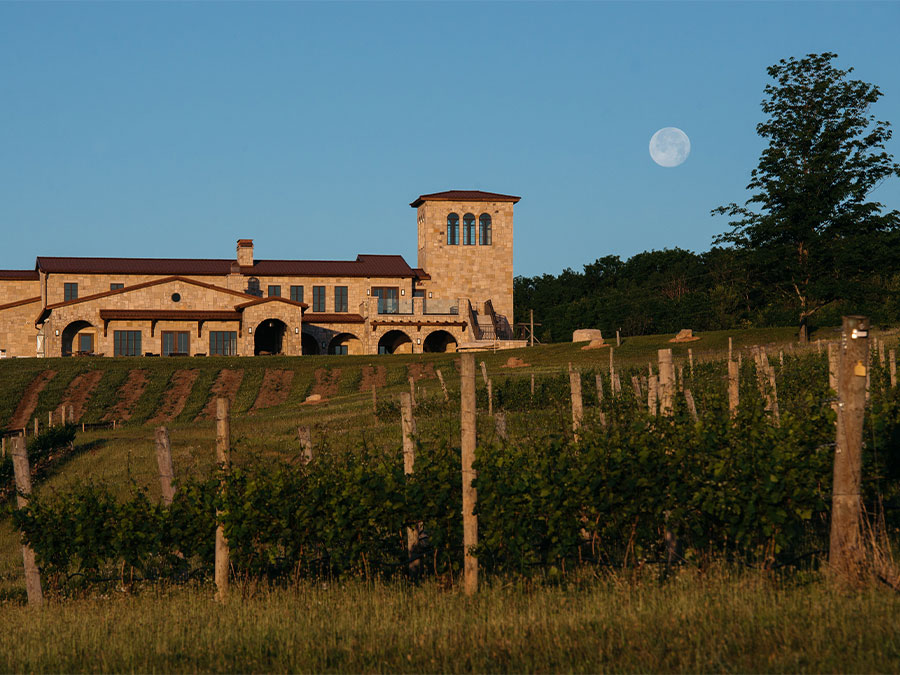

90 | Mari
2016 Old Mission Peninsula Proserpina Red Blend $50
Blending merlot (75 percent) with teroldego, this is concentrated and a bit smoky when first poured, with a leathery grip around juicy dark red-berry fruit. It has a burstingly juicy middle palate, which gives it energy for barbecue. (267 cases)
90 | Mawby
NV Michigan Brut Gold Sparkling $35
Pinot noir–dominant, this leads with scents of pear and peach, caramelized and rich. The flavors have the structure of a blanc de noir, sturdy and softly elegant, with the freshness for pheasant or duck.
90 |Verterra
2021 Leelanau Peninsula Pinot Blanc $24
Scents of scallion and pea shoots lead in this youthful white. It has a white apple-pulp breadth, which hints at Great Lakes humidity, and a dusty minerality for whitefish. (700 cases)
89 | Aurora Cellars
2020 Leelanau Peninsula Gruner Veltliner $22
Savory and springy when first poured, this gruner is correct in its scents of pea shoots and leek tops. The green-apple fruit gives a tart impression, for an onion tart or herbed salad. (325 cases)
89 | Good Harbor
2020 Leelanau Peninsula Pinot Noir-Zweigelt $40
Exotic pine scents lead; with air, a juicy red-cherry scent fills in the pine. The flavors are lean and suedelike, with a tobacco finish that calls for something like beef paprikash.
Patrick J. Comiskey covers US wines for Wine & Spirits magazine, focusing on the Pacific Northwest, California’s Central Coast and New York’s Finger Lakes.
This is a W&S web exclusive. Get access to all of our feature stories by signing up today.


